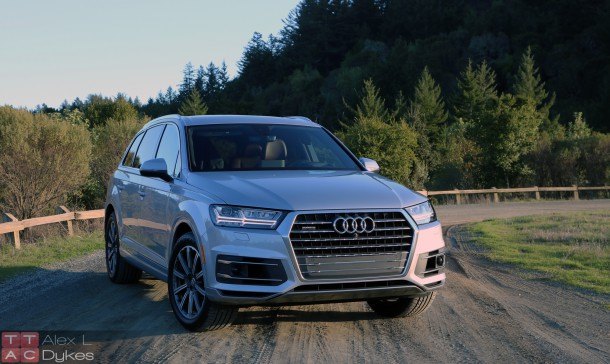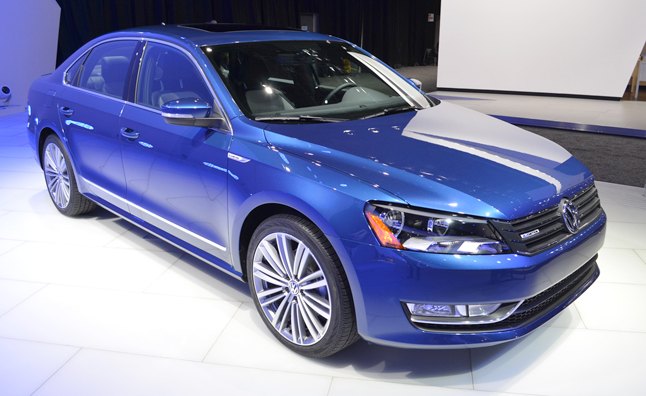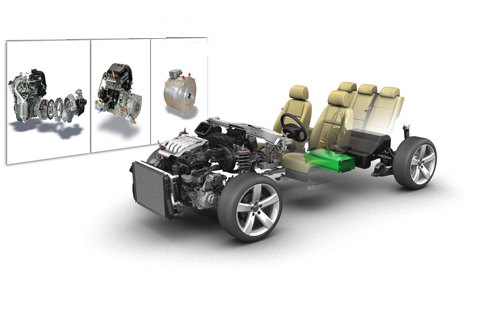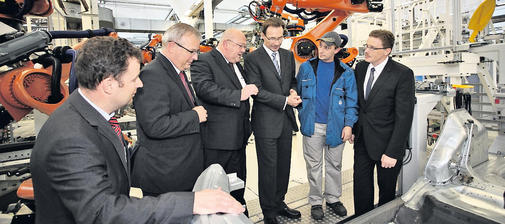#MLB
2017 Audi Q7 Review - The Three-Row Flagship
We recently reviewed the 2016 Volvo XC90, the long overdue redesign of Volvo’s family hauler. First introduced as a 2002 model, the XC90 was a teenager by the time it was finally replaced. Oddly enough, it’s a similar story with the Audi Q7.
In response to Volvo’s then-new XC90, Audi began development of the seven-seater Q7 in 2002, which later hit the market in 2005. It received a facelift in 2009, but the basics of the slab-sided Audi remained. Eleven years later, and at around the same time as the new XC90, Audi has finally reinvented the Q7 as a sort of soft-road A8 Avant.
Can it compete against the new XC90 for the hearts and minds of luxury-minded families?
Volkswagen Unveils Plans For 5 Series/E-Class Fighter
The world is not enough for Volkswagen AG, as it now has plans to introduce a mid-size sedan to slot between the Passat and the Phaeton.
MQB FUD: Burdened By Legacy Platforms, GM Fights Off The Kits - And What Are Those Kits Anyway?
(Note: This story is not for the TL;NR crowd. If you need it in one short sentence: If your car company isn’t working on a kit architecture, kiss them good-bye.)
Call it coincidence, but immediately after TTAC flogged GM for having missed the kit architecture train, and for being chained to the antique platform model well into the next decade and possibly beyond, GM launched operation pushback. It could not be tolerated that the supposedly “New GM” was painted as a company with out-of-touch technology, so Selim Bingol rallied his troops.
The first skirmishes were fought by GM partisans dropped behind the lines of the story. Their comments seemingly were taken from a common sheet of talking points:
(This story intentionally appears on a weekend. This type of partisan usually works 9-5.)
The Kit Race: You Have To Be In It To Win It - And GM Ain't
Most large automakers are working on a modular architecture of some sort. Farthest ahead appears to be Volkswagen, which already is rolling out new car after new car on one of four related kit architectures, and which is rumored to be working on one master kit. The other day, Toyota showed me glimpses of its new kit architecture, first cars to be expected in 2015. Today, GM showed us this chart. And there are no kits on it.
Born From Kits: Volkswagen Invents The Incredible Money Machine
We have been writing about it for years, now, Bloomberg wakes up to it:
“Volkswagen AG will kick off its biggest technology overhaul in almost two decades.”
Bloomberg still has a hard time of coming to grips with the technological revolution. It’s not just that “more than 40 models will use a set of standardized components such as axles, steering columns and chassis,” as Bloomberg puts it. This is not a parts bin exercise. Through the Volkswagen empire, cars don’t just share the same steering columns. They are designed using standardized building blocks of a common kit architecture.
The Revolution Of The Car Industry: Kit Cars
Within the next ten years, the car industry will change more than in the past fifty years. At least at Volkswagen, says Audi Chief Rupert Stadler. Platforms are a thing of the last century. The future of the car industry is kit cars. Or make that cars designed and built using elements of a common kit architecture. Currently, there are two families of erector kits which can be assembled into all kinds of cars at Volkswagen. They have Teutonic names like “Modularer Querbaukasten” (MQB) and “Modularer Längsbaukasten” (MLB). Porsche is developing a “MMB” (Modularer Mittelbaukasten) for Mittelmotor (mid-engined) cars. Or possibly a MSB (Modularer Standardbaukasten), which could be the Mutter of all Baukasten.
Audi is already working with the MLB architecture. This coming year, Volkswagen will start using the MQB. Says Automobilwoche [sub]:





















Recent Comments